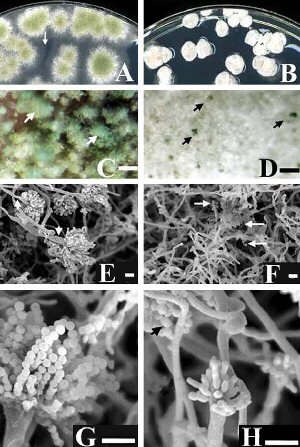Fungal Cell Biology

No current projects as of Jan 2015. Check back March 2015.
Filamentous fungi such as moulds and mildews, form tubular cells called hyphae. Some fungi colonize a diversity of non-living organic substrates, and others interact with living hosts through symbioses or by causing disease. Advantages to studying basic processes in fungal model systems include compact size, fast growth rate, morphological simplicity, and a wealth of experimental and genetic tools. Fungal genomes are smaller and less complex than those of animals (many fungal genomes are completely sequenced), and yet some animal and fungal genes are functionally homologous.
Fungal cells are surrounded and protected by walls that mediate their environmental interactions. My research uses chemical and cell molecular genetic methods and microscopy to explore aspects of fungal growth and interaction.
Our main research system is the model organism Aspergillus nidulans, particularly genes that affect hyphal morphogenesis and/or cell wall structure. These include galactofuranose biosynthesis and cell secretion genes. Along with well-established types of microscopy (confocal fluorescence, TEM, SEM), we are using high spatial resolution chemical analytical methods (including AFM, FTIR, and SERS) for characterizing fungal hyphae and their wall composition and structure.
Our paper on antifungal drug sensitivity (Alam, El-Ganiny, Afroz et al 2012 Fungal Genetics and Biology 49: 1033-1043) was chosen for the cover image of that issue.

